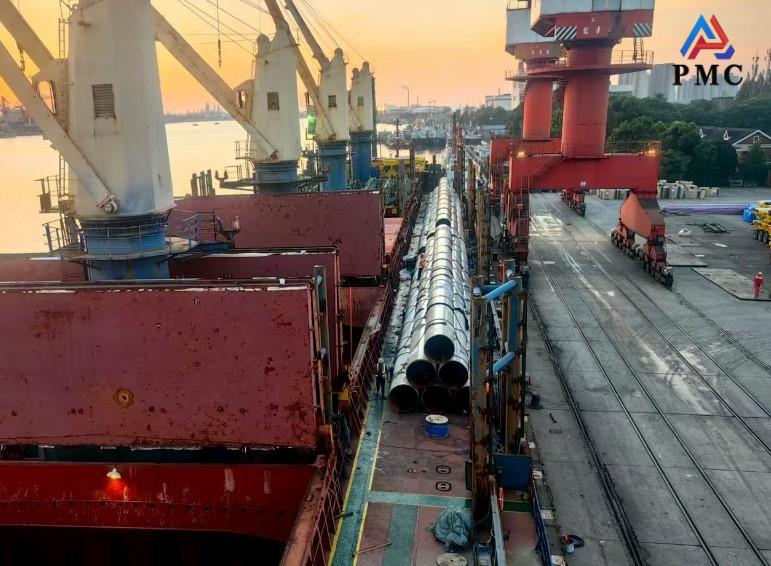
Materials of SMLS Pipes for Oil Transportation
SMLS pipes(seamless pipes) for oil transportation are key infrastructure materials used in the oil and gas industry to transport crude oil, refined oil, natural gas, and other hydrocarbon fluids. These fluids typically operate under high pressure, even high temperature, or in corrosive environments, placing extremely high demands on the performance and reliability of the steel pipes. SMLS pipes, due to their inherent advantages, have become an important choice for oil pipelines. The following carefully summarizes the commonly used materials, implementation standards, and other relevant information for smls pipes for oil transportation.
Why do oil pipelines prefer smls pipes?
Seamless pipes offer significant advantages in oil transportation applications:
High pressure bearing capacity: smls pipes are made from solid steel billets through perforation and rolling. The pipe body is free of welding defects and stress concentration and can withstand higher internal pressure, which is crucial for long-distance, high-pressure oil pipelines.
Excellent reliability: No welds mean no potential leaks or failure risks due to weld quality issues, thus improving the safety of pipeline operations.
Uniform mechanical properties: The metallographic structure and mechanical properties of the entire tube are more uniform, ensuring stable performance under various working conditions.
Good fatigue resistance: In pressure fluctuation or vibration environment, the fatigue resistance of smls pipe is generally better than that of welded steel pipe.
Corrosion resistance (body): Although carbon steel itself will corrode, the seamless pipe body structure reduces the weak points susceptible to corrosion in the weld area. When stainless steel seamless pipes or alloy steel seamless pipes are used, the corrosion resistance will be greatly improved.
Materials of SMLS pipes for oil transportation
The material selection of smls pipe for oil transportation depends on factors such as the corrosiveness of the conveying medium, operating temperature, pressure and geographical environment:
Carbon steel: This is the most common choice, especially for general crude oil and natural gas transportation. Commonly used grades include: API 5L Grade B, X42, X46, X52, X60, X65, X70, X80, etc.: These are pipeline steel grades in the API 5L standard, where the number after "X" represents the minimum yield strength (in thousand pounds per square inch, ksi). The higher the grade, the greater the strength, and it is usually used for higher pressure or larger diameter pipelines.
Low alloy steel: Low alloy steel is used when higher strength, better toughness or in certain low temperature environments.
Corrosion-resistant alloy steel/stainless steel: When transporting "sour oil and gas" containing corrosive components such as hydrogen sulfide (H2S), carbon dioxide (CO2), chlorides, or in extremely corrosive environments, more advanced alloy steel or stainless steel seamless pipes are used, such as:
Various austenitic stainless steels: TP304/304L, TP316/316L, TP321, etc.
Duplex stainless steel: 2205 (S31803), 2507 (S32750), etc., with high strength and excellent resistance to chloride stress corrosion and pitting corrosion.
Nickel-based alloys: such as Inconel and Hastelloy, used in extremely harsh corrosive environments.

Implementation standards for smls pipes for oil transportation
The production and inspection of smls pipes for oil transportation must strictly follow international and domestic industry standards to ensure their quality and safety performance.
API SPEC 5L (American Petroleum Institute Standard 5L):
This is the most authoritative and widely used pipeline pipe standard in the global oil and gas industry. It covers seamless and welded steel pipes, and has detailed provisions on material, size, mechanical properties, non-destructive testing, hydrostatic testing, etc.
PSL1 and PSL2: API 5L standard divides products into two product specification levels, PSL1 and PSL2. PSL2 has stricter requirements on chemical composition, mechanical properties and testing, and is suitable for more critical and harsher applications.
ISO 3183
This is the steel pipe standard for oil and gas industry pipeline transportation systems issued by the International Organization for Standardization, which is highly coordinated with API 5L.
ASTM series of standards
ASTM A106: Seamless carbon steel pipe for high temperature service.
ASTM A333: Seamless carbon steel and alloy steel pipe for low-temperature service.
ASTM A335: Seamless ferritic alloy steel pipe for high-temperature service (such as chromium-molybdenum steel).
Chinese National Standard (GB/T)
GB/T 9711: Petroleum and Natural Gas Industry - Technical Delivery Conditions for Steel Pipes, corresponding to API 5L.
GB/T 8163: Seamless steel pipe for conveying fluids, used for general fluid transportation.
Size range and corrosion protection of smls pipes for oil transportation
Size range: The diameter range of seamless pipes for oil transportation is very wide, from small diameters of a few inches (such as used in gathering pipelines) to large diameters of dozens of inches (such as used in long-distance trunk lines). The wall thickness is determined by the design pressure and safety factor. Common ones include Schedule 40, STD, XS, XXS, etc.
Length: Common lengths include Single Random Length (SRL, usually 5-7 meters) and Double Random Length (DRL, usually 10-12 meters). Custom lengths can also be made according to project requirements.
Anti-corrosion treatment: Most seamless pipes for oil transportation undergo strict external anti-corrosion treatment before laying to resist erosion by soil, water and microorganisms. Common anti-corrosion coatings include:
FBE (Fusion Bonded Epoxy): Fusion bonded epoxy powder coating.
3PE/2PE (Three-Layer Polyethylene/Two-Layer Polyethylene): three or two layers of polyethylene anti-corrosion layer.
Coal tar epoxy coating, liquid epoxy coating, etc.
During pipeline installation, the anti-corrosion treatment of on-site welded joints (patches) is as important as the anti-corrosion of the pipeline itself. Commonly used methods include heat shrink sleeves, liquid epoxy coatings, etc.
SMLS pipes for oil transportation are an indispensable component of modern energy transportation networks, and their high quality and reliability are the key to ensuring the security of energy supply.
Read more: Seamless Pipe for Oil Transportation
- 【Prev】 : Introduction of Mild Steel ERW Pipe
- 【Next】 : Can Seamless Pipes be Buried Underground?


